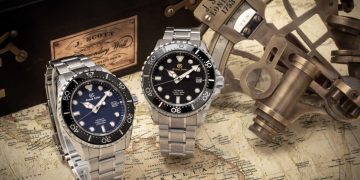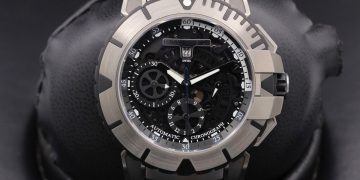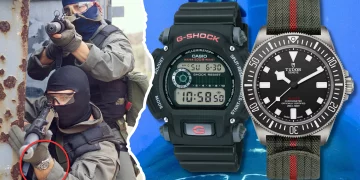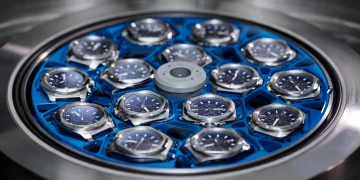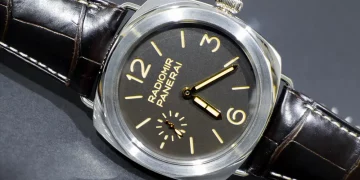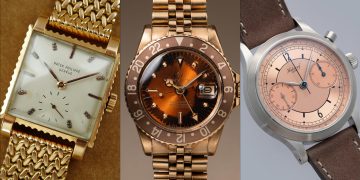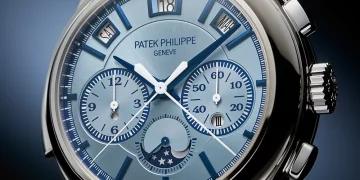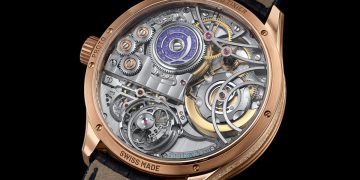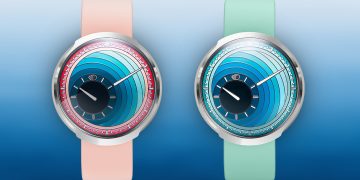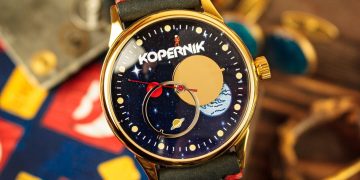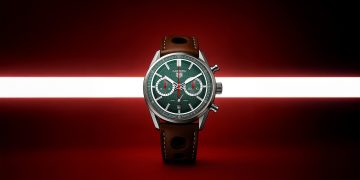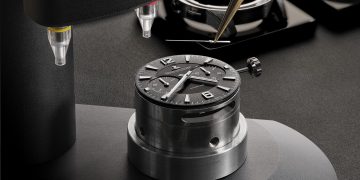In the ever-evolving world of watchmaking, where precision and durability are paramount, innovations in technology continue to push the boundaries of what’s possible. One such cutting-edge development is the application of nanotechnology—a field that manipulates matter at the atomic or molecular level. This technological breakthrough has already made significant strides in a variety of industries, from medicine to electronics, and now, it’s making its way into the luxury watchmaking sector. The question arises: Can nanotechnology truly enhance the performance and durability of watches, and how will it impact the future of horology?
This article delves into the potential benefits and challenges of incorporating nanotechnology into watchmaking. We will explore the ways in which this advanced technology could influence the materials, mechanisms, and overall performance of watches, examining whether it can live up to its promise of revolutionizing the industry.
1. What Is Nanotechnology?
Nanotechnology involves the manipulation of materials and systems at the scale of nanometers (one billionth of a meter), typically involving atoms and molecules. At this incredibly small scale, materials can exhibit different properties compared to their bulk counterparts. These properties can be harnessed for a wide variety of applications, including creating stronger, lighter, and more durable materials, improving chemical interactions, and enhancing electrical and thermal conductivities.
The application of nanotechnology in watchmaking promises to deliver a range of benefits, from improving the longevity of materials to creating highly advanced coatings that protect watches from wear and tear. As we will see, the integration of nanotechnology could significantly improve the performance and durability of timepieces, enhancing both their functionality and aesthetic appeal.
2. Nanotechnology’s Impact on Materials in Watchmaking
a. Enhanced Durability with Nanocoatings
One of the most promising applications of nanotechnology in watchmaking is the use of nanocoatings to enhance the durability of watch surfaces. These coatings, applied to watch cases, dials, and straps, offer a variety of protective properties that can improve a watch’s resistance to scratches, corrosion, and other types of wear and tear.
For example, diamond-like carbon (DLC) coatings, which are a form of nanotechnology, have been used by several high-end watch brands to create ultra-durable, scratch-resistant surfaces. DLC coatings are incredibly hard and can significantly improve the scratch resistance of the watch’s case, even in harsh environments. Watches coated with DLC retain their aesthetic appeal for a longer time, keeping their surfaces pristine, even after exposure to daily wear.
Furthermore, anti-reflective coatings that are based on nanotechnology can be applied to watch crystals, reducing glare and improving readability under different lighting conditions. These coatings enhance the optical clarity of the watch, ensuring that the wearer can read the time with ease, regardless of external factors such as sunlight or artificial lighting.
b. Self-Cleaning and Water-Repellent Surfaces
Another key advantage of nanotechnology is the ability to create self-cleaning surfaces. Through the application of hydrophobic (water-repellent) and oleophobic (oil-repellent) coatings, watches can become resistant to water, dirt, and fingerprints. This type of nanocoating works by creating a surface structure that repels water and other liquids, causing them to bead off the surface without leaving marks.
For example, hydrophobic coatings could be applied to the glass or case of the watch, reducing the risk of water damage and ensuring that the watch remains free from unsightly stains or smudges. This feature is particularly valuable in diving or sports watches, where exposure to water and other environmental factors is inevitable.
Similarly, oleophobic coatings could be used to prevent fingerprints from accumulating on the surface of the watch, keeping it looking clean and polished at all times. These types of coatings are particularly useful for luxury watches with highly polished surfaces, as they reduce the need for frequent cleaning.
c. Lightweight and High-Strength Materials
Nanotechnology is also being employed to develop new materials with improved strength-to-weight ratios. For example, nanocomposites—materials made by incorporating nanoparticles into polymers or metals—are being used to create lightweight yet highly durable components for watches. These materials are strong enough to withstand shocks and impacts, yet light enough to ensure the watch remains comfortable on the wrist.
Brands like Richard Mille have already embraced this technology by using materials like titanium and LITAL®-T alloys, which are lightweight yet strong enough to resist damage. By combining these materials with nanotechnology, watchmakers can improve the overall strength of the watch without compromising its weight or comfort.
3. Nanotechnology’s Role in Movement Components
Beyond enhancing the external components of the watch, nanotechnology has the potential to significantly improve the performance and longevity of the watch’s internal mechanisms, particularly the movement. The moving parts inside a mechanical watch—gears, springs, escapements—are subject to wear due to friction. Over time, friction can cause the components to degrade, reducing the accuracy and reliability of the watch.
a. Reducing Friction and Wear in Movements
One of the most promising applications of nanotechnology in watch movements is the development of nanolubricants. These specialized lubricants can be used to reduce friction between moving parts, enhancing the efficiency of the movement and reducing the amount of wear and tear on the internal components. Nanolubricants can also work in much smaller quantities than traditional oils, providing long-lasting protection against the friction that naturally occurs in mechanical movements.
For example, lubricant additives made from nanoparticles can create a thin, durable layer between moving components, reducing friction and heat buildup. This can improve the accuracy and longevity of the movement, ensuring that the watch remains in good working condition for many years.
b. Nanostructured Materials for Movement Components
Nanotechnology also holds the potential to create nanostructured materials for movement components. These materials can be engineered at the atomic level to possess unique properties, such as enhanced wear resistance, improved elasticity, and greater mechanical strength. For example, nanostructured metals and alloys could be used to create watch gears and springs that are more resistant to fatigue and wear, improving the overall performance of the movement.
These advanced materials could also help reduce the size of components while maintaining strength and functionality, enabling more compact and sophisticated movements. This could lead to the creation of smaller, more precise mechanical movements that are highly reliable, even in demanding conditions.

4. The Benefits of Nanotechnology in Watchmaking
a. Longer Lifespan and Reduced Maintenance
By using nanotechnology to enhance the durability and performance of watches, manufacturers can significantly extend the lifespan of timepieces. Watches with nanocoatings, self-cleaning surfaces, and advanced lubricants require less frequent maintenance and are less prone to damage from everyday use. As a result, watch owners can enjoy their timepieces for longer periods without the need for costly repairs or replacements.
b. Enhanced Precision and Reliability
Nanotechnology’s ability to reduce friction, wear, and corrosion can enhance the accuracy and reliability of a watch’s movement. By incorporating nanolubricants and nanostructured materials, watchmakers can improve the consistency of timekeeping, even in extreme conditions. This results in a watch that not only looks stunning but also performs at a higher level than traditional watches.
c. Customization and Innovation Opportunities
The integration of nanotechnology in watchmaking opens the door to new opportunities for customization and innovation. As manufacturers embrace these advanced technologies, they can create timepieces that are uniquely designed, more durable, and highly specialized to meet the needs of specific consumers. Whether it’s a watch for extreme sports, diving, or luxury wear, nanotechnology can enable watchmakers to craft timepieces that stand out in both performance and appearance.
5. Challenges and Limitations
While the potential benefits of nanotechnology in watchmaking are significant, there are also several challenges that must be overcome before it can be fully integrated into the industry.
a. Cost and Accessibility
Nanotechnology remains a relatively high-cost technology, and the materials and processes associated with it are expensive to implement. While luxury watchmakers may be able to absorb these costs, mass-market brands may find it difficult to adopt these technologies without significantly increasing the price of their watches.
b. Consumer Acceptance
The application of nanotechnology in watches is still a relatively new concept for many consumers. While the benefits are clear to those in the industry, it may take time for consumers to understand and appreciate the advantages that nanotechnology can offer. Watchmakers will need to educate consumers on the long-term value of nanotechnology to build trust and demand for these innovative features.
c. Environmental Impact
While nanotechnology can offer numerous benefits in terms of durability and performance, the long-term environmental impact of the materials and processes used in nanotechnology is still under investigation. As the technology continues to evolve, manufacturers will need to carefully consider its sustainability and ensure that it does not create unforeseen environmental challenges.
6. Conclusion
Nanotechnology has the potential to significantly enhance both the performance and durability of watches, offering new opportunities for innovation and improvement in materials, coatings, and movement components. From scratch-resistant coatings to nanolubricants that reduce friction, the benefits of nanotechnology are vast and can help create watches that are not only more durable and reliable but also offer greater functionality and design flexibility.
However, the widespread adoption of nanotechnology in watchmaking faces challenges related to cost, consumer education, and sustainability. While it may take time for nanotechnology to become commonplace in the industry, the future of horology may very well involve a synergy between traditional craftsmanship and cutting-edge technology. As the technology matures and its benefits become more widely recognized, we are likely to see a revolution in how watches are made—one that combines precision, performance, and durability in ways previously unimaginable.


